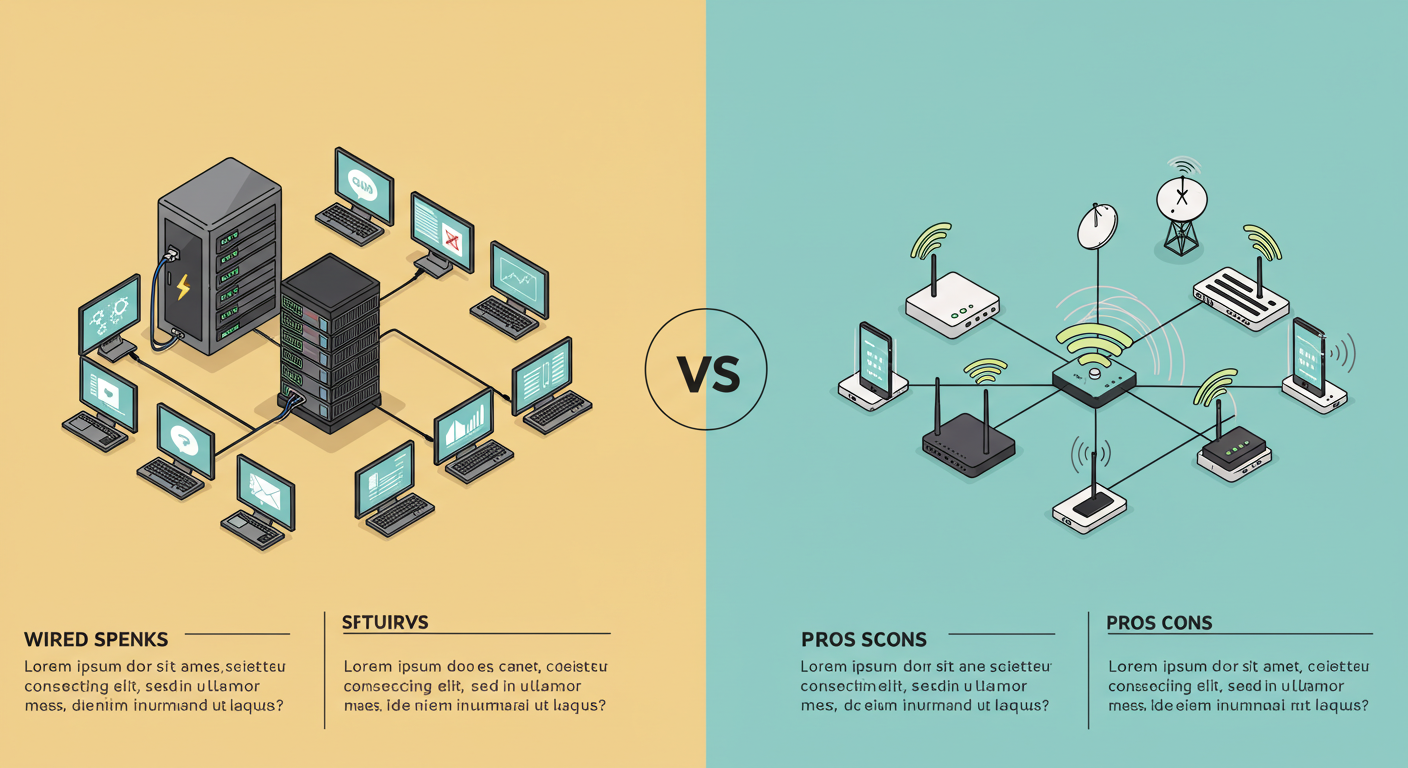Wired and wireless networks are the two most common types of internet connection. However, as famous as these networks are, some people may get confused about them.
Both types have fundamental differences and choosing the wrong connection can make your life hard. So, in this article, I am going to differentiate the two internet network types. And, I’ll explain their pros and cons briefly so you know what each connection type offers and if it suits you or not. Let’s start:
Wireless Connections
Difference Between Wired and Wireless Connections
Advantages of Wired Connection
Disadvantages of Wired Connections
Advantages of Wireless Connections
Disadvantages of Wireless Connections
Winding Up
Wired Connections:
A wired connection is when you physically plug in your computer to an ethernet cable or a wall jack to use the internet. Wired connections have a reputation for providing reliable and high-speed internet. Fiber and cable internet are two famous examples of wired connections.
Wireless Connections:
Wireless connections transmit data via electromagnetic or infrared waves via air. Wireless connections offer more mobility to users since they’re not bound by any ethernet cable. That being said, wireless connections are often less reliable as compared to wired connections. 5G Home Internet is a famous type of wireless connectivity.
Difference Between Wired and Wireless Connections:
| Criteria | Wired Connection | Wireless Connection |
| Flexibility to change | Less flexible | More flexible |
| Mobility | Fixed | High mobility |
| Reliability | More reliable | Less reliable |
| Security | More secure | Less secure |
| Installation | More costly | Less costly |
| Speed | High speed | Low speed |
| Medium | Copper and fiber | Electromagnetic and infrared waves move through the air |
Advantages of Wired Connection:
Stability and Reliability:
Wired connections are not influenced by other networks in the area. Wired internet (not WiFi) has fewer connectivity issues and does not bog down when traffic increases on a network.
Visibility:
Wired connections are not visible to devices connected to a different network. Hence, those devices cannot connect to a wired connection (unless allowed to), and the network interference remains low. However, devices can communicate with each other over a wired connection for as long as they’re connected to the same wired network.Speed:
Wired connections are faster. Where there are thick walls and obstructions, wireless signals are blocked easily. Hence, you may see offices with wired connections. In these cases, physical connections, for example, wired connections are more reliable and do not slow down by traffic or network congestion.
Security:
Wired connections are broadly secured with firewalls and other security protocols. Devices can also get automatic updates when connected to the ethernet cable.
Cost:
Setting up a wired connection may be costly, but in the long run, its durability beats the cost and makes it quite cost-effective.
Disadvantages of Wired Connections:
Mobility:
Mobility is a big issue in wired connections as it hinders users’ mobility. You can move around as long as your ethernet cable stays connected to the port.
Installation:
Installing a wired network can be tricky and needs professionals’ help.
Inconvenient:
Wired connections have a lot of cables involved, especially in an office space. Unless wired connections are not installed professionally, ethernet cables lying around aren’t a pleasing sight.
Advantages of Wireless Connections:
Cost:
The cost of a wireless connection is largely dependent on the number of users and area coverage. However, hardware, for instance, modem and router is still needed for a wireless connection.
Mobility:
A wireless connection offers mobility as users can freely move around. Still, users have to stay within the area of coverage. That being said, the area of coverage can be extended using WiFi Mesh or Extenders.
Maintenance:
Maintenance of wireless internet connections rarely includes hardware, for instance, modem and router. Most times, software issues create trouble in wireless internet connections, which are fixable.
Easy Upgradation:
You can easily upgrade your wireless internet plan by exploring different plans and packages offered by multiple wireless ISPs.
Disadvantages of Wireless Connections:
Visibility:
A wireless internet connection is visible to other people or connections. The possibility of interference by other networks or users increases in a wireless connection.
Speed:
As the number of users increases on a wireless network, it may become congested. Resultantly, the speeds may drop.
Security:
In wireless connections, data signals move through the air and are more likely to be intercepted. Hence, wireless connections are less secure than hardwired connections.
Reliability:
Wireless signals can easily be obstructed by walls, furniture, or electronic devices. This is a major reason why wireless signals’ strength varies from place to place.
Winding Up:
I believe there is no loser when it comes to deciding between wired and wireless networks. Depending on the situation, one connection may perform better than the other. For instance, if you’re looking for office internet, a wired connection would be more suitable as it can provide more speed and reliability. However, if you need internet connectivity for your home, going wireless would be a better option since it offers more mobility.











